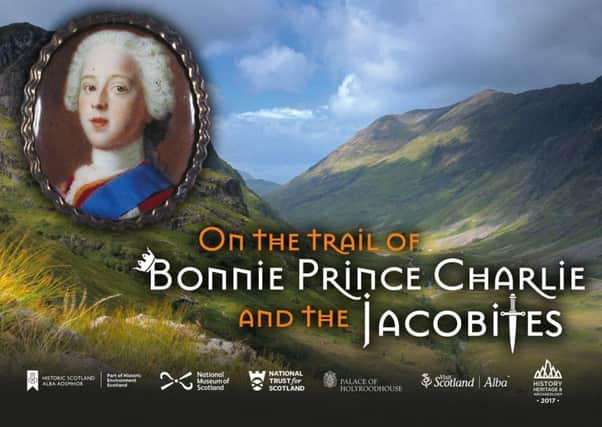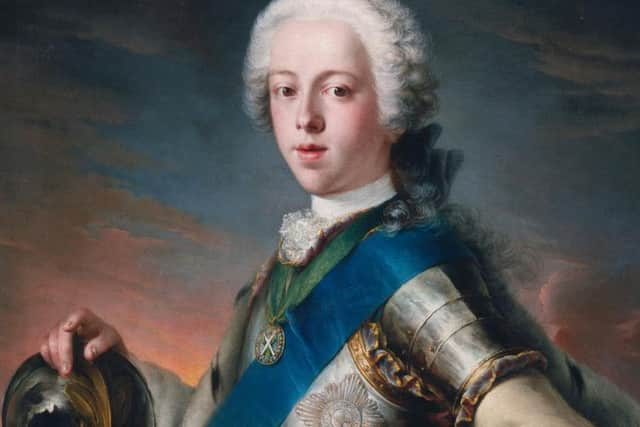10 surprising facts about Bonnie Prince Charlie


With the aid of the Jacobites, the man born Charles Edward Louis John Casimir Sylvester Maria Stuart staged a doomed campaign to win the British throne back from the Hanoverians in 1745–6. He earnestly believed in his divine right to be king, being the grandson of James VII, who had been succeeded by William of Orange. His endeavour was ultimately unsuccessful, but his legacy lives on.
Here are 10 surprising facts about this fascinating figure, who is the focal point of a new trail around Scotland.
He didn’t spend much time here


Advertisement
Hide AdAdvertisement
Hide AdHe arrived in the Outer Hebrides, on the island of Eriskay, on 23 July 1745, just 24 years old. Following his defeat at the Battle of Culloden on 16 April 1746, he spent five months as a fugitive in the western Highlands and islands, before fleeing to France. This ended a period of less than 14 months – the extent of his time in Scotland over his life.
King over the water
Within Scotland, it was treason to support the exiled Stuarts, so Jacobites established coded phrases, rituals and symbols to establish allegiance. The most famous was the toast “to the king over the water” – where the drinker would raise their glass over a bowl of water in reference to James VIII & III.
Post Culloden, the attempt to suppress Jacobite ritual was so great it’s said that finger bowls were banned at court from 1746 to 1901 to ensure the toast couldn’t be made.


The secret portrait
But people still found a way to show their loyalty. After 1746, once ladies and servants cleared the room after dinner, Charlie’s followers would produce a tray, lay it on the table, and place a cylinder on top. In the cylinder’s reflection you could see the likeness of Prince Charlie, which they would then drink to. If they were in danger of discovery, the visage could quickly be dismantled.
Master of disguise
Driven by necessity, Charlie became a dab hand at subterfuge. While in exile after his defeat at Culloden, he disguised himself as ‘Mr Sinclair,’ a ship-wreck merchant, before fleeing to the Outer Hebrides dressed as an Irish maid, ‘Betty Burke,’ aided by Flora MacDonald, who ended up incarcerated in the Tower of London for six months for her collusion.
He spent the rest of his life moving around Europe in a range of guises, even managing to steal into London once in a failed attempt to rally further support to the Jacobite cause. And in a move that would earn the praise of the Scarlet Pimpernel himself, he made frequent covert visits to the Palace of Versailles, even going as far as to attend a masque ball in the presence of the king. When in France he used the pseudonym Baron Renfrew as the French were not supposed to be entreating with the Stuarts.
Quite the catch…
As a young man, Charlie cut a dashing, well-educated figure – fluent in Italian, French, English and German, musical, handsome and athletic. He was proficient on the ‘bass viol,’ a form of cello, and his charisma and good looks made him popular with women.
Advertisement
Hide AdAdvertisement
Hide AdIn a broadsheet professing to contain the contents of a letter by Jacobite supporter Miss Christian Threipland, he was described as ‘The Blessed Object,’ ‘A Gift From Heaven,’ ‘Top Perfection,’ and ‘Heaven’s Darling’. Women were reported to follow Charlie during the 1745 rising, offering him money and encouraging their husbands to fight for him.
A younger woman
His life was storied by various love affairs, but Charlie eventually wed at the age of 51, to a German princess named Louise of Stolberg-Gedern, some 31 years his junior.
The last charge of the Jacobites
In leading the 1745 rising, Charlie oversaw what was to become the last earnest attempt by the Jacobites to reclaim the Scottish, English and Irish throne. When it was a failure he grew deeply bitter, cross, and drunken. He was particularly piqued when his brother Henry Benedict joined the Catholic Church, further strengthening the Jacobite association with Catholicism and thus weakening support for the Stuart’s right to the throne within Britain. Henry had been proffered their father’s blessing for the conversion, an act that so angered Charlie he didn’t speak to him again.
A decadent lifestyle
Charlie’s life after the rising, lived out in France and Italy, was marred by debauchery. As a mark of his entitled decadence, he insisted a bed be placed in his box at his favourite Parisian theatre. This way, he could be seen entering, receive applause, and then lower himself to drink and slumber his way through performances.
Buried in Rome
Bonnie Prince Charlie is buried alongside his father, mother and younger brother in the Basilica of St Peter in the Vatican.
Oh Come, All Ye Faithful (to Charlie)
According to Professor Bennett Zon, of Durham University, the hymn “Oh Come All Ye Faithful” is a birth ode to Charlie. The song’s author, John Francis Wade, was a Jacobite who often decorated his liturgical books with Jacobite imagery. By Zon’s reckoning, the ‘faithful’ are the Jacobites, with ‘Bethlehem’ a common Jacobite cipher for England.
To learn more about the Bonnie Prince Charlie and the Jacobites trail, visit www.jacobitetrail.co.uk
And to be in with a chance to win a luxury six-night Jacobite Journey, visit www.jacobitetrail.co.uk/win